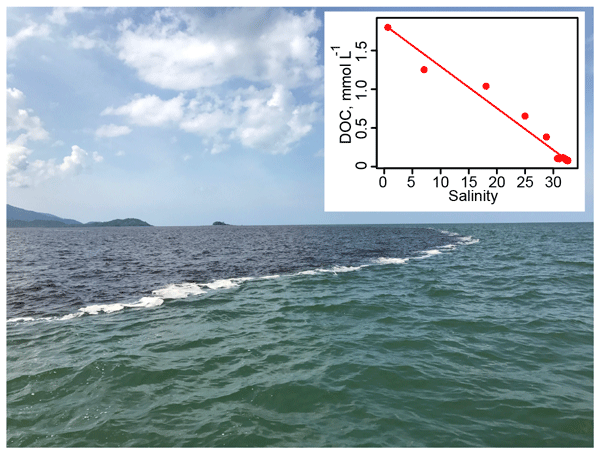Tropical peat on:
[Wikipedia]
[Google]
[Amazon]
 Tropical peat is a type of
Tropical peat is a type of
BBC - Borneo healing plants threatened
BBC - Asian peat fires add to warming
Wise Use of Tropical Peatlands: Focus on Southeast Asia
CARBOPEAT Project
*
International Peat Society
{{Wetlands Pedology Types of soil Wetlands
 Tropical peat is a type of
Tropical peat is a type of histosol
In both the World Reference Base for Soil Resources (WRB) and the USDA soil taxonomy, a Histosol is a soil consisting primarily of organic materials. They are defined as having or more of organic soil material in the upper . Organic soil materia ...
that is found in tropical latitudes, including South East Asia, Africa, and Central and South America. Tropical peat mostly consists of dead organic matter from trees instead of spaghnum which are commonly found in temperate peat. This soils usually contain high organic matter content, exceeding 75% with dry low bulk density around .
Areas of tropical peat are found mostly in South America
South America is a continent entirely in the Western Hemisphere and mostly in the Southern Hemisphere, with a relatively small portion in the Northern Hemisphere at the northern tip of the continent. It can also be described as the sout ...
(about 46% by area) although they are also found in Africa, Central America, Asia and elsewhere around the tropics. Tropical peatlands are significant carbon sink
A carbon sink is anything, natural or otherwise, that accumulates and stores some carbon-containing chemical compound for an indefinite period and thereby removes carbon dioxide () from the atmosphere.
Globally, the two most important carbon si ...
s and store large amounts of carbon
Carbon () is a chemical element with the symbol C and atomic number 6. It is nonmetallic and tetravalent—its atom making four electrons available to form covalent chemical bonds. It belongs to group 14 of the periodic table. Carbon mak ...
and their destruction can have a significant impact on the amount of atmospheric carbon dioxide
Carbon dioxide ( chemical formula ) is a chemical compound made up of molecules that each have one carbon atom covalently double bonded to two oxygen atoms. It is found in the gas state at room temperature. In the air, carbon dioxide is trans ...
. Tropical peatlands are vulnerable to destabilisation through human and climate induced changes. Estimates of the area (and hence volume) of tropical peatlands vary but a reasonable estimate is in the region of .
Although tropical peatlands only cover about 0.25% of the Earth's land surface they contain 50,000-70,000 million tonnes of carbon (about 3% global soil carbon). In addition, tropical peatlands support diverse ecosystems
An ecosystem (or ecological system) consists of all the organisms and the physical environment with which they interact. These biotic and abiotic components are linked together through nutrient cycles and energy flows. Energy enters the syst ...
and are home to a number of endangered species including the Orangutan
Orangutans are great apes native to the rainforests of Indonesia and Malaysia. They are now found only in parts of Borneo and Sumatra, but during the Pleistocene they ranged throughout Southeast Asia and South China. Classified in the genu ...
.
The native peat swamp forests contain a number of valuable timber-producing trees plus a range of other products of value to local communities, such as bark, resins and latex. Land-use changes and fire, mainly associated with plantation development and logging (deforestation
Deforestation or forest clearance is the removal of a forest or stand of trees from land that is then converted to non-forest use. Deforestation can involve conversion of forest land to farms, ranches, or urban use. The most concentrated ...
and drainage), are reducing this carbon store and contributing to greenhouse gas (GHG) emissions.
The problems that result from development of tropical peatlands stem mainly from a lack of understanding of the complexities of this ecosystem and the fragility of the relationship between peat and forest. Once the forest is removed and the peat is drained, the surface peat oxidises and loses stored carbon rapidly to the atmosphere (as carbon dioxide). This results in progressive loss of the peat surface, leading to local flooding and, due to the large areas involved, global climate change. Failure to account for such emissions results in underestimates of the rate of increase in atmospheric GHGs and the extent of human induced climate change
In common usage, climate change describes global warming—the ongoing increase in global average temperature—and its effects on Earth's climate system. Climate change in a broader sense also includes previous long-term changes to ...
.
See also
*Peat
Peat (), also known as turf (), is an accumulation of partially decayed vegetation or organic matter. It is unique to natural areas called peatlands, bogs, mires, moors, or muskegs. The peatland ecosystem covers and is the most efficient ...
* Peat swamp forest
Peat swamp forests are tropical moist forests where waterlogged soil prevents dead leaves and wood from fully decomposing. Over time, this creates a thick layer of acidic peat. Large areas of these forests are being logged at high rates.
Peat ...
References
External links
BBC - Borneo healing plants threatened
BBC - Asian peat fires add to warming
Wise Use of Tropical Peatlands: Focus on Southeast Asia
CARBOPEAT Project
*
International Peat Society
{{Wetlands Pedology Types of soil Wetlands